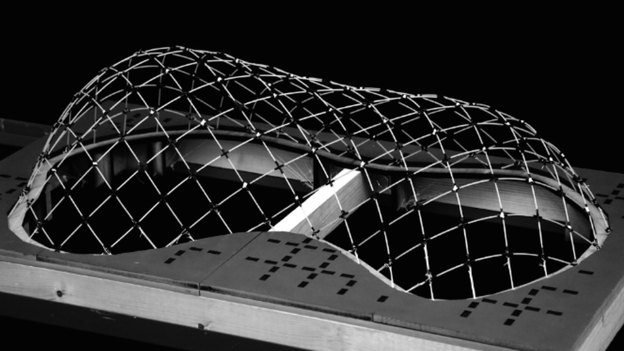Shell structures are material efficient structures capable of covering large spans with minimum weight. If concrete is used as the building material for the shell, it must be initially supported by a formwork. These generally rigid formworks, and their supporting falsework structure, are time and material consuming to construct. Recently, researchers have recommended the use of elastic gridshells as falsework system. Unfortunately, the design of such a system is complicated by large deformations of the bending elements. Moreover, since gridshells are inherently flexible, significant displacements generally occur when applying the wet concrete.
To overcome these difficulties, this paper presents a design tool to effectively design a gridshell serving as the falsework for a concrete shell. The gridshell is assumed to be constructed from an initially flat grid of straight slender rods, using cables with adjustable lengths to brace the erected gridshell. An optimization algorithm is proposed that fits the shape of the gridshell under the wet concrete loading to a given target shape by manipulating the lengths of the bracing cables. Meanwhile, the optimization algorithm reduces the construction effort by minimizing the number of cables, and the diameter of the grid rods. Moreover, feasibility of the design is ensured by constraining the axial force in the cables and limiting the displacements under increased loading. A gradient-based optimization scheme is adopted, and an implicit dynamic relaxation approach previously developed specifically for the simulation of bending-active structures is used to solve the nonlinear equilibrium equations. Nonlinear effects such as buckling of the grid rods are taken into account by using co-rotational beam elements. The resulting design tool is applied for the design of a scale model, demonstrating the feasibility of the suggested falsework system. The optimized design fits the target better, uses less cables, and is more resistant to additional loading compared to designs from existing design approaches. Comparisons between the numerical and physical models show deviations of up to around 2% of the larger span for the design load and smaller deviations for smaller loads, with differences attributed to small model scaling effects.




